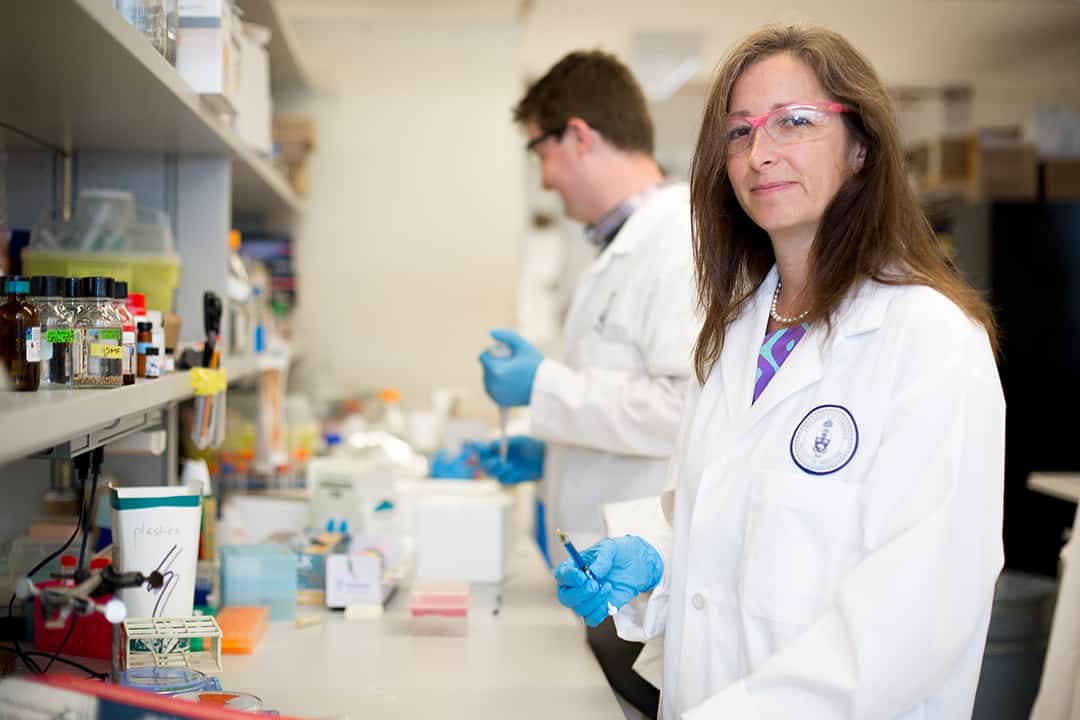Earlier this month, University of Toronto professor Molly Shoichet of the Department of Chemical Engineering & Applied Chemistry became the third woman to win the Gerhard Herzberg Canada Gold medal.
Herzberg was awarded for “her outstanding accomplishments and discoveries, and for her advancement of scientific knowledge and innovation.” Her team is known for its development of synthetic hydrogel materials that can be used to repair damaged organs.
The one million dollar prize is often called Canada’s most prestigious science award. A pioneer in the field of regenerative medicine, Shoichet first started working in the field after she graduated from the University of Massachusetts Amherst with a PhD in polymer science and engineering.
Shoichet discussed her work and career in an email interview with The Varsity.
Early years
After getting her PhD, Shoichet started to work in the private sector.
“I decided to work at a small biotech company in the greater Boston area that was focused on cell therapy. Lucky for me, I found myself working in the field of regenerative medicine before it really had that name,” wrote Shoichet.
After three years, Shoichet moved back to Canada to start her academic career at the University of Toronto. “U of T has been a powerhouse institution in regenerative medicine for several decades and it is here that my career has blossomed, bolstered by amazing collaborators across Faculties of Engineering, Medicine and Science,” wrote Shoichet.
Shoichet is an internationally known researcher for her innovative use of three-dimensional hydrogels in the field of tissue engineering. Hydrogels are essentially water-swollen materials and are found everywhere — from the food that we eat to the contact lenses that we wear.
Hydrogels are also used as scaffolds for tissue engineering. These scaffolding hydrogels contain large pores to accommodate living cells. They can also be designed to dissolve or degrade, releasing chemicals to encourage cell growth and allowing the cells to proliferate in the pores.
Shoichet and her team use hydrogels as biomimetic materials and have invented a series of hydrogels. “One hydrogel that we invented promotes tissue healing while serving as a vehicle for cell transplantation and therapeutic delivery,” wrote Shoichet. “This material is being advanced towards the clinic for the treatment of post-surgical pain by AmacaThera.”
AmacaThera is a U of T startup that was built on the technologies developed in Shoichet’s lab.
Repairing vision and spine degradation
Shoichet and her team designed hydrogels to help reverse vision loss and repair spinal cord degradation.
Age-related macular degeneration, an eye condition that millions of people suffer from worldwide, is caused by the death of retinal pigmented epithelium (RPE) cells and photoreceptors in the retina.
While researchers have tried to treat this disease by replacing the dead RPE cells or photoreceptors by implanting healthy ones into the eye, not much progress has been made due to challenges such as the low survival rate of the injected cells.
As experts in using hydrogels for tissue engineering, Shoichet and her lab decided to use hydrogels to inject healthy cells. This can reduce inflammation, promote tissue healing after the injection, and the eventual degradation of hydrogels leaves the healthy cells behind.
While their method resulted in partial vision repair in a mouse model, the benefits were limited. Inspired by the fact that RPE and photoreceptors are considered as one functional unit, Shoichet and her team decided to see if delivering both cells at the same time would improve vision loss.
The key to this method was that the characteristics of hydrogels allowed the delivery of multiple cell types. The results showed significant improvement compared to previous methods, but Shoichet and her team noted that there is still a long road until this approach can be applied in clinical practice.
Afterward, the method can finally treat many vision impairment diseases such as age-related macular degeneration and change the lives of millions of people around the globe.
Choichet’s lab has also demonstrated a way to use hydrogels to improve spinal degradation. Intervertebral disc degradation (IVD), one of the main causes of back pain, is the leading cause of disability in the world. While there has been a lot of progress in terms of cell therapy for IVD, there are still a lot of remaining challenges for clinical applications. Shoichet and her team used a specific hydrogel to treat IVD.
Their hydrogel-based approach was found to be more effective compared to earlier approaches, and also has potential for use in clinical practice.
A team of many
Shoichet considers the interdisciplinary nature of her research a crucial reason for her achievements.
“Our research is at the intersection of chemistry, biology and engineering,” she wrote. “We bring our expertise in chemistry and engineering to answer questions in biology. We invent materials that are explicitly designed based on solving problems in medical research.”
“We are successful because we have creative collaborators in complementary fields and because we have attracted superbly innovative students and post-doctoral fellows,” Shoichet added.
So what advice does a successful researcher have for women in STEM?
“Science, like life, requires a team to succeed. Find great people to join your team.”


